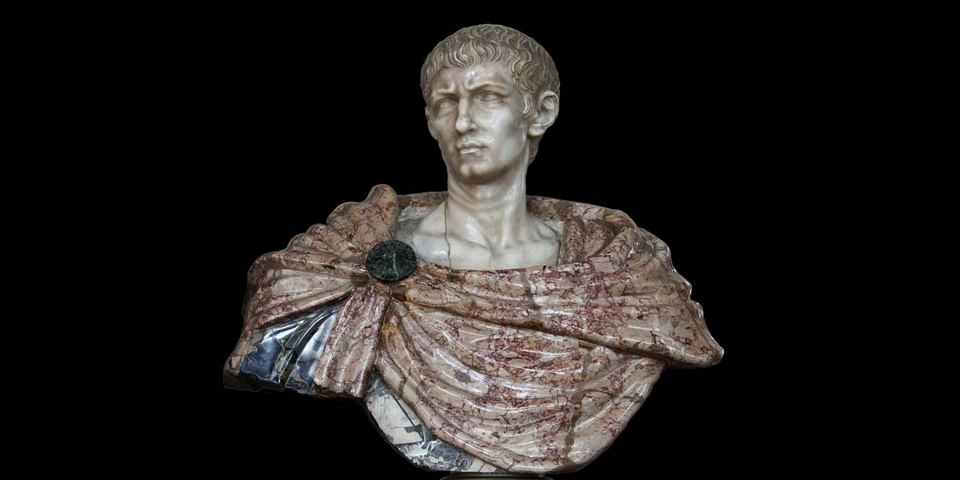

24832 views

Diocletian was a Roman emperor from 281 to 305 AD. When Emperor Philip the Arab was defeated in 249, the empire endured over three decades of inefficient emperors. Moreover, the ancient Roman Empire suffered from financial and military problems. There were many attacks along the Danube River and from the eastern provinces. From 284, Diocletian completely changed the previous plight of the Empire.
Contents
ToggleDiocles, later known as Diocletian, was born in 245 AD in the Balkan province of Dalmatia. His parents were of low status. However, he rose progressively through the ranks and eventually became a member of an elite corps within the Illyrian army. Later, Diocletian became an army commander in Moesia, which was an award for his talent. In 283, he joined the Roman Emperor Carus in Persia, where he was one of the bodyguards or “protectores domestici,” the elite cavalry force attached to the Imperial household. This post earned him the position of consul in 283. Moreover, Diocletian took part in Carus’ later Persian campaign.
Carus died on mysterious occasions. He was believed to have been killed by Persian soldiers. His sons Numerian and Carinus were left as the new “Augusti.” Carinus went to Rome from his post in Gaul as imperial commissioner in 284 and became a legitimate Emperor in the West. Numerian stayed to rule in the East. The Sassanid king Bahram II wanted to establish his authority and tried to field an army against the brothers. By 284, Numerian reached Emesa (Hons) in Syria, where he was in good health. However, later he suffered from an inflammation of the eyes. Numerian traveled in a closed coach when his army smelled an odor emanating from that coach during the trip to Bithynia. They opened it and found Numerian dead. Most probably, this death was a result of an assassination.
Thus, Numerianus’ generals and tribunes called a council for the succession, where Diocles was chosen a new emperor
Diocletian and Lucius Caesonius Bassus were chosen as consuls. Bassus was a member of a senatorial family from Campania and a former consul and proconsul of Africa. Moreover, he had an experience in areas of government where Diocletian didn’t have any experience. Most probably, Bassus chose Diocletian as consul as a sign of rejection of Carinus’ rule in Rome. In addition, in 284-285, Diocletian’s armies met Carinus’ across the river Margus in Moesia. When the battle began, Carinus was killed by his own men. Following Diocletian’s victory, both the Western and the Eastern armies acclaimed him as Emperor.
Diocletian thought that is almost impossible to rule the empire because of its huge size. He decided that it was too large to be ruled by one person, and eventually, he split the empire into two parts. He didn’t have an heir, so he named an Illyrian officer, who was his son-in-law, named Maximian as Caesar in the west, while Diocletian remained Emperor in the east. This decision afforded Diocletian the time to solve the problems in the East. He still considered himself to be the senior Emperor, leaving the possibility to veto any of Maximian’s decisions.
However, peace in the empire didn’t last for long. As with his predecessors, problems appeared along the Danube River in Moesia and Pannonia. For five years, Diocletian was campaigning throughout the eastern half of the empire. An eventual victory in 286 AD brought peace to the empire and the title of Germanicus Maximus to Diocletian. Also, in 289 AD, Diocletian defeated the Sarmatians and Saracens in 292 AD.
Moreover, Maximian had similar problems in the West. Carausius, the Roman North Sea fleet commander, took control over Britain and part of northern Gaul, proclaiming himself Emperor. He was awarded his command after helping Maximian defeat Bagaudae in Gaul. Later, when it became known that he kept most of the “spoils of war” for himself, he was outlawed, and Maximian issued the death sentence. But, like many people who declared themselves Emperor, he met his death at the hands of someone under his command, in this case, his finance minister Allectus.
The concept of a divided empire obviously worked. However, the situation that every Emperor faced since Augustus had to be corrected, and this was a succession. Diocletian solved this perennial problem with the help of tetrarchy – an idea that preserved the empire in its current state with two emperors but allowed a smooth transition in the event of the death or abdication of the Emperor. The new proposal stipulated that two Augustus – Diocletian in the east and Maximian in the west – and Caesar would serve with each Emperor. This “Caesar” will become the successor of “Augustus” if he dies or resigns. Each of the four would manage its territory and its capital. Although the empire remained divided, each Caesar was accountable to Augustus. Maximian adopted and then named his Praetorian commander Constantius as his Caesar to fill these new posts. Constantius gained a reputation after leading a number of successful campaigns against Carausius. Diocletian chose Caesar Galerius, who served with distinction under the emperors Aurelian and Probe.
Diocletian’s main achievement was the tetrarchy. Also, the Emperor reorganized the empire from the tax system to the provincial administration. He tried to eliminate revolts in provinces and doubled the number of provinces from 50 to 100 for it. Then, he organized provinces in 12 dioceses ruled by vicars, who gained military responsibilities. The military system was also changed to mobile field forces, the “comitantenses,” and frontier units, the “limitanei.”
Because of the influence of Greece and Greek culture, the true center of the empire changed to the East. It became more prominent with the rule of Emperor Constantine, who made Byzantium a “New Rome.” Despite such ambitious projects as the new Roman baths – the largest in the Roman world, built in 305 AD, Diocletian visited the great city only once, and that was before his abdication. Also, Maximian preferred Mediolanum (Milan). For Diocletian, the capital was where he was; however, he eventually chose Nicomedia as his capital.
Read more about the Roman Thermal Baths of Diocletian.
There were not only financial and border security problems but also the rapid growth of Christianity. Religion was both popular among the poor and the rich. Since Diocletian wanted stability, it led to a return to the more traditional gods of Rome. However, Christianity prevented it. Moreover, since the days of Emperor Augustus, there was an imperial cult – the deification of the Emperor, which Christians and Jews refused to support it.
Diocletian considered himself a living god who wore a jeweled diadem and asked people to kiss the hem of his robe. In 297, the Great Persecution of the Christians started. They refused to sacrifice to the Roman gods. At the same time, in 303, Diocletian ordered the destruction of all churches and Christian texts. Many Christians were tortured and killed until the end of persecution in 305.
In 303, he became seriously ill after the Emperor’s first trip to Rome. Later, in 305, he left the throne and took retirement in his palace in Spalatum (Split and Croatia today). Moreover, Diocletian persuaded Maximian to leave the throne as well. The joint abdication led to the succession of emperors by Constantinus and Galerius, who were appointed as the new Caesars.
Diocletian died in his palace in 311 AD
Read also about Roman Emperor Vespasian.
Author: Kate Zusmann
This website uses cookies. For more info read the cookies policy
Rome.us © 2025. Created with love by Roman experts and guides.